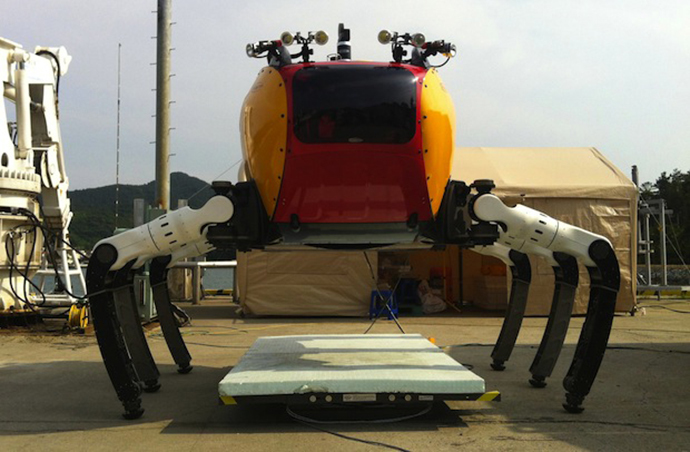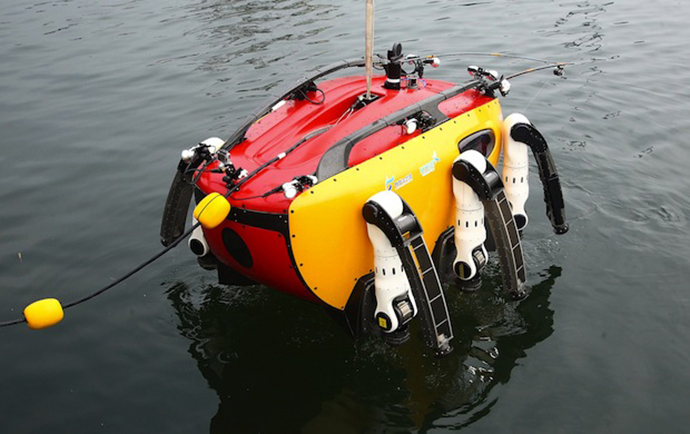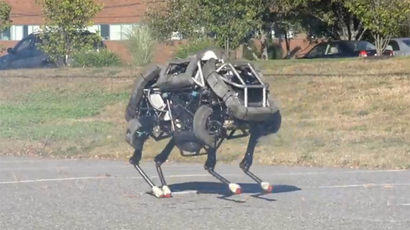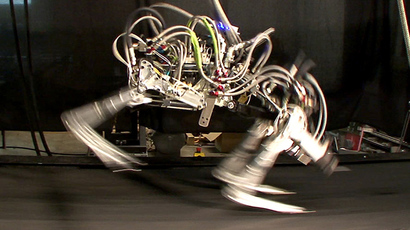Crawling robo-crab seeks to revolutionize underwater exploration (PHOTOS, VIDEO)
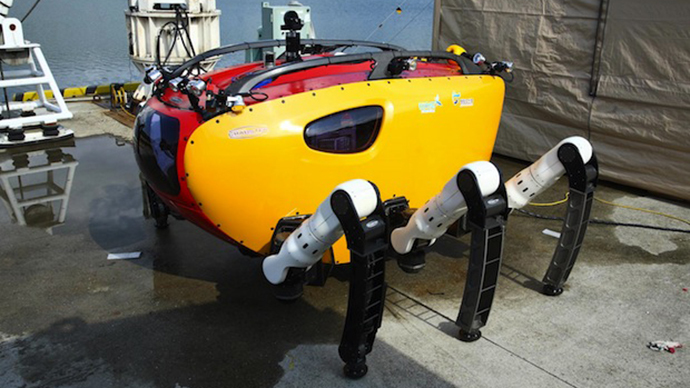
Crabster, designed to scuttle across the ocean floor and survive strong ocean currents and tides just like a real crustacean, has all the chances to be the world’s largest and most agile underwater walking robot, its project team boasts.
A new crab-like robot is being released into the oceans by the Korean Institute of Ocean Science and Technology.
CR200, or Crabster as it is affectionately called by its creators, weighs in at over half a ton and has six walking legs, unlike its natural brothers, who have eight.
It’s also way bigger than real crabs: It’s 2.4 meters long, 2.4 meters wide and – when its legs are fully extended – 1.8 meters high.
But it’s also a good deal slower than one of Mother Nature’s crabs, and its creators say that its speed of 10cm/second is one of their main challenges, since it’s difficult to improve Crabster’s stability in strong currents and on rough terrain.
The peculiar design for the robot was chosen as crabs and lobsters can easily control their movements even though they live in stormy waters. Current propeller-driven submersibles do not work properly in fierce tides and human divers are limited to calm, shallow seas.
CR200 hopes to revolutionize the way underwater craft are developed in the future. It can operate down to a depth of 200 meters and adapt its posture to different pressure conditions.
It is also kitted out with sonar to scan the seabed for objects of interest, and can send images up to the surface through onboard cameras.
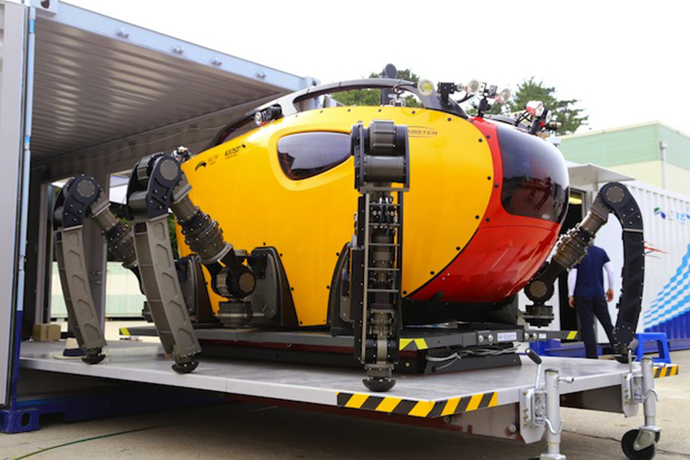
Bong Huan jun, the lead researcher of the project, said the robot had performed very well in initial tests but was still undergoing continuous modifications.
“We are performing tests nearly every day. We upgrade Crabster software for more stable and fast walking and manipulation,” he told CNN.
The robotic crab will perform its first mission in May, when it will be looking for ancient artifacts in the Yellow Sea where existing craft have been unsuccessful.
Should this maiden voyage be a success, then Huan jun believes it will have a large worldwide impact.
"We suppose CR200 can conduct seabed mapping, survey and inspection of wrecks, pipelines, ecosystems and pollution down to a 200-meter depth. CR200 will help divers or work instead of them in harsh environments. It also could assist in locating underwater resources, carrying out underwater mining, and responding to oil spill incidents," he said.
He said his team is trying to make Crabster more versatile by trying to program it to swim like a turtle or a diving beetle. They are also considering a hydraulic version for heavy duty underwater work.
He said he wasn’t sure if the other inhabitants of the deep would know for sure if he is a real crab or not, but said that he hoped that “animals would treat him friendly.”
